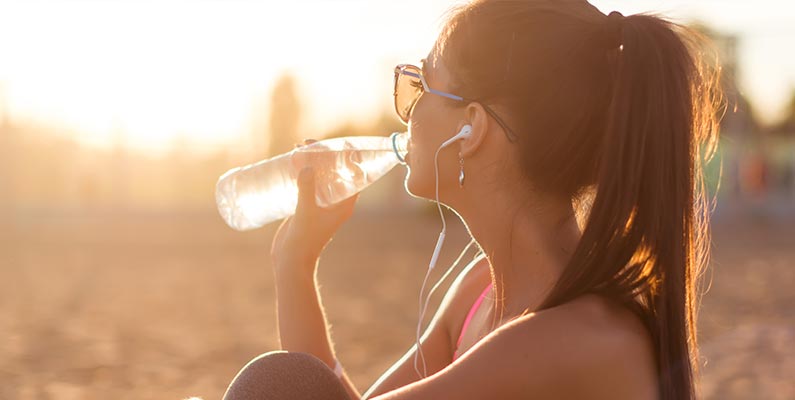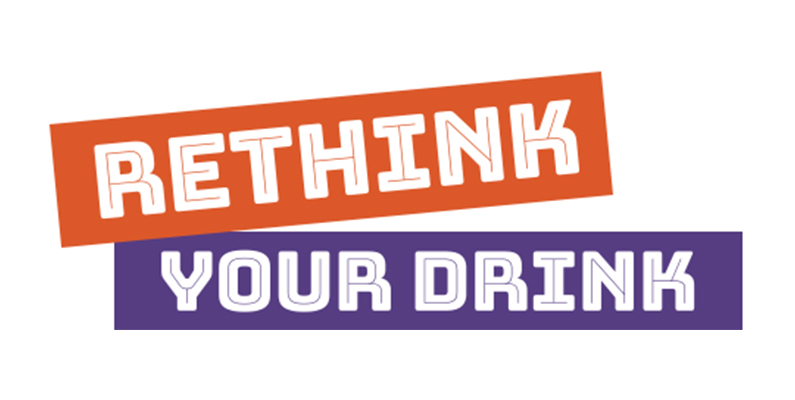
Let’s not sugar-coat it!
Sugar-sweetened beverages (SSBs) are beverages with added sugar. These drinks include soda pop, juice and fruit drinks, sweetened teas or coffees, flavored waters, chocolate milk, and sports and energy drinks. Consumption of SSBs can lead to tooth decay and other health issues in both children and adults. In fact, drinking soda pop nearly doubles the risk of cavities in children. 1
Further, the sugar in SSBs feeds the bacteria that produce acid in your mouth, which attacks and dissolves tooth enamel. It’s important to know that despite having more nutrients and containing only natural (not added) sugar, 100 percent fruit juice typically contains as much sugar and calories as soda pop. So, when you or your children are thirsty, reach for a cold glass of water instead of a sugar-sweetened beverage!
How much added sugar is too much? Here are the recommended daily limits:2,3
- Newborns and infants: 0 tsp. (0g)
- Toddlers and preschoolers: 4 tsp. (16g)
- Children ages 4-8: 3 tsp. (12g)
- Pre-teens and teenagers: 5-8 tsp. (20-32g)
- Adult women: 6 tsp. (24g)
- Adult men: 9 tsp. (36g)
Did you know?
- Four grams of sugar is equal to one teaspoon.
- A typical 20-ounce soda pop or juice/fruit drink contains 15-18 teaspoons of sugar—as much as in three candy bars!
- Drinking one 12-ounce soda pop each day increases a child’s chances of becoming obese by 60 percent.4
- People who drink one or two cans of soda pop a day have a 26 percent greater risk of developing type 2 diabetes.5
Sip tips
- Reduce the number and portion size of SSBs—only drink them once in a while, 8 ounces or less.
- Freeze 100 percent fruit juice in an ice cube tray, then add one frozen cube to a glass of water for flavor.
- Add a splash of 100 percent fruit juice to plain water.
- Add zest to your water with fresh fruit slices such as lemon or lime.
- Stock the fridge with a jug of cold water and bottled water for when you’re on-the-go.
- Choose water or milk (1 percent or nonfat for those older than age 2).
- Don’t let babies and toddlers carry around sippy cups or bottles containing SSBs (and no bottles in bed).
- Brush with fluoride toothpaste twice a day for two minutes each time, and floss once a day.
Please note: Numbers are approximate. All of these numbers and guidelines are based on averages and not tailored to individual health needs. Please contact your physician for guidance about how consumption of added sugar may affect you, particularly if you or a family member has any pre-existing health conditions. Read label for the most current nutrition facts, as formulations and sizes may change.
 Order Rethink Your Drink materials
Order Rethink Your Drink materials
- To place an order for Rethink Your Drink posters and/or brochures, click here.
- Complete this form to order a Rethink Your Drink kit.
This information is available for download in a brochure or oral health flyer.
1 Sohn W, Burt BA Sowers MR, “Carbonated soft drinks and dental caries in the primary dentition,” Journal of Dental Research 85, no. 3 (2006): 262-266.
2 Yale Rudd Center, “Added Sugar Fact Sheet,” web.
3 American Heart Association, “Frequently Asked Questions About Sugar,” web.
4 Ludwig DS, Peterson KE, Gortmaker SL, “Relation between consumption of sugar-sweetened drinks and childhood obesity: a prospective, observational analysis,” Lancet 357, no. 9255 (2001): 505-08.
5 Malik VS, Popkin BM, Gray GA, Despres JP, Willett WC, Hu FB, “Sugar-sweetened beverages and risk of metabolic syndrome and type 2 diabetes: a meta-analysis,” Diabetes Care, 33, no. 11 (2010): 2477-2483.